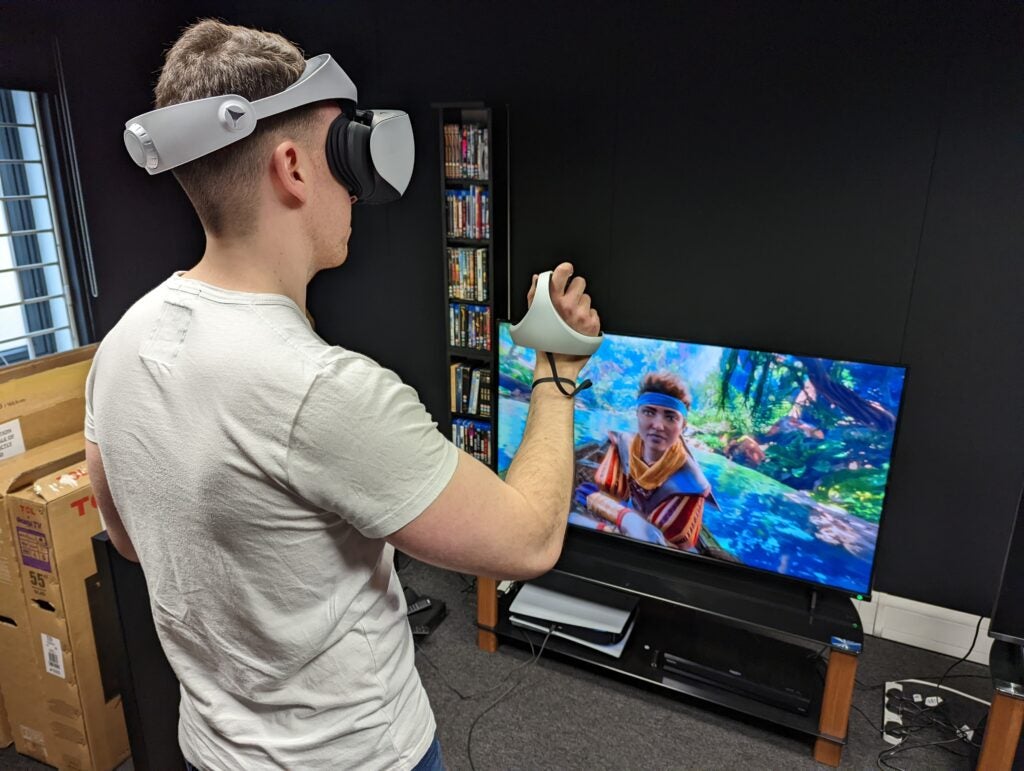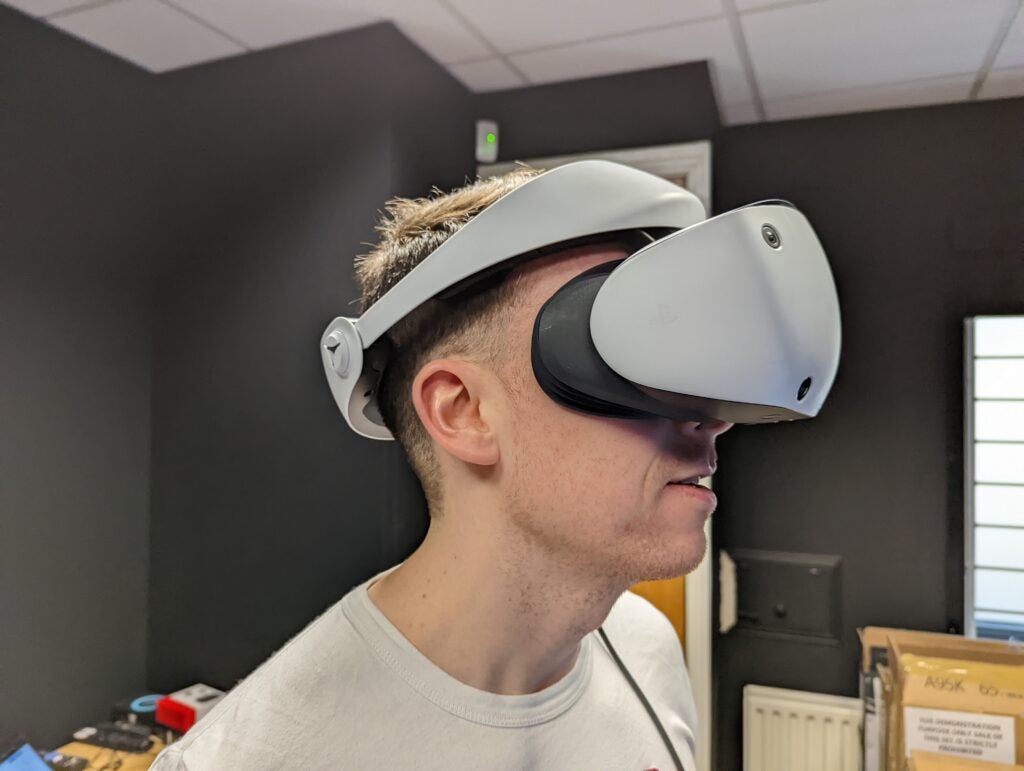Meta has just announced its more affordable alternative to the 4.5-star Quest 3, titled the Quest 3S.
While Meta promises that the Quest 3S boasts the “same mixed reality capabilities and fast performance as the Meta Quest 3, but at a lower price point”, how does it compare to the four-star PlayStation VR2?
Ahead of its official launch, we’ve broken down the specs of the upcoming Quest 3S against the PSVR 2 and highlighted the key differences between the two below.
Specs comparison
| Meta Quest 3S | PlayStation VR2 | |
| UK RRP | £289.99 | £529.99 |
| USA RRP | $299.99 | $549.99 |
| EU RRP | €329.99 | €599.99 |
| Manufacturer | Meta | Sony |
| Field Of View | 96° | 110° |
| Refresh Rate | 120Hz | 120Hz |
| Release Date | 2024 | 2023 |
Price
The Meta Quest 3S is currently available for pre-order and is set to launch on October 15th. Available in two sizes, 128GB or 256GB, the Quest 3S has a starting RRP of £289.99/$299.99.
The PlayStation VR2 is pricier, with an RRP of £529.99/$549.99. Unlike the Quest 3S, it doesn’t come with a choice of storage sizes.
PSVR 2 needs a PlayStation 5 to work
Most notably, the PSVR 2 is not a standalone device and requires a PlayStation 5 to work. As the PS5 has a starting RRP of £479.99/$499, this is something that’s worth considering if you’re on a limited budget but still keen to try out virtual reality.


The connection between the VR 2 and the PS5 isn’t wireless either and requires a USB-C cable. Although we found this meant that gaming could commence immediately (as long as eye-tracking was set-up and playing space was designated), the cable can still restrict your freedom of movement whilst gaming.
As the Quest 3S is a wireless mixed reality headset and doesn’t require any extra consoles or devices to work, it’s certainly a more affordable (and freeing) option.


Since its launch in 2023, there haven’t been many new games added to the VR 2’s game library. Although Sony has confirmed more upcoming games, this still remains a sticking point for the headset, particularly as you can’t play any titles from the original PSVR on it.
On the other hand, the Quest 3S is able to utilise the Meta Store which has had an evergrowing library of content ever since the Oculus Quest back in 2019. In fact the Meta Quest library boasts thousands of apps and games, with Meta confirming that Quest 3 specific performance updates will also work on the Quest 3S.


PSVR 2 offers eye-tracking
Not only does the VR 2 offer eye-tracking technology but it’s also one of more affordable headsets to do so, with the next ‘cheapest’ option being the £999/$999 Meta Quest Pro.
Eye-tracking detects the motion of the player’s eyes, allowing them to interact more intuitively when immersed in a virtual world. While some PSVR 2 games have utilised the eye-tracking, there are many more that are yet to experiment with it which limits the technology’s full potential.
Having said that, the VR 2 does make use of foveated rendering which uses eye-tracking technology to improve the picture quality of the specific screen area you’re looking at, while conserving the power of the PS5’s GPU.


Quest 3S runs on Snapdragon XR2 Gen 2 chipset
Despite being a more affordable headset, the Quest 3S uses the same chipset as the Quest 3, Qualcomm’s Snapdragon XR2 Gen 2. This processor not only promises up to 50% improved power efficiency and 8x improved AI capabilities than its predecessor (the Snapdragon XR2 Gen 1 which is found in the five-star Quest 2), but it also boasts high-definition graphics too.
Although we don’t have all the specific details of the chips that power the VR 2, we do know that it isn’t a Qualcomm offering and instead a MediaTek processor. The exact chip isn’t necessarily as important in the VR 2 as it is in the Quest 3S however given that the former relies on the PS5 to do most of the processing power.


PSVR 2 provides 4K HDR
The VR 2 has an OLED display with 4K HDR video format, which works out to 2000 x 2040 per eye. We found in our review that the 4K OLED display looks superb with colours appearing more vibrant across different games.
Users can also stream content and play any non-VR PS5 games within the headset in 1920×1080 HDR quality by enabling Cinematic Mode.
The Quest 3S on the other hand offers a slightly lower display resolution of 1832 x 1920, the same as the Quest 2. Although this isn’t as impressive as the VR 2 nor the Quest 3, we still found images on the Quest 2 to be “sharp” which should serve as some indictation of what to expect.
Otherwise, the two headsets offer a panel refresh rate of 90-120Hz, so games will appear smooth with minimal lag and stutter. However, when the VR 2 is in Cinematic Mode, content is available with 24, 60 and 120Hz frame rates.
Early Verdict
Until we review the Quest 3S ourselves, we can’t say for sure which headset comes out on top, but even now there’s a chance that the Quest 3S could have the upper hand. While the PSVR 2 is undoubtedly the more powerful device, and if you have a PS5 console already then you may get a lot of use out of it, it still hasn’t been able to deliver on a handful of must-play titles in the same way that the Meta Quest Store has, and the Quest 3S will have access to it right out of the gate.




